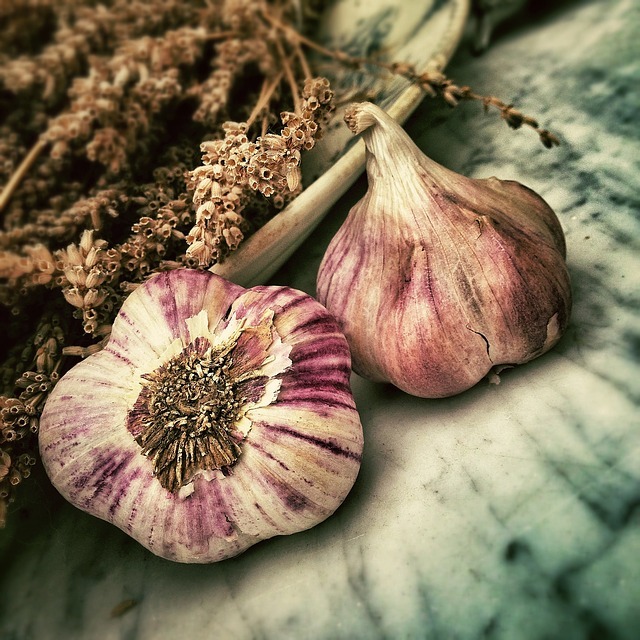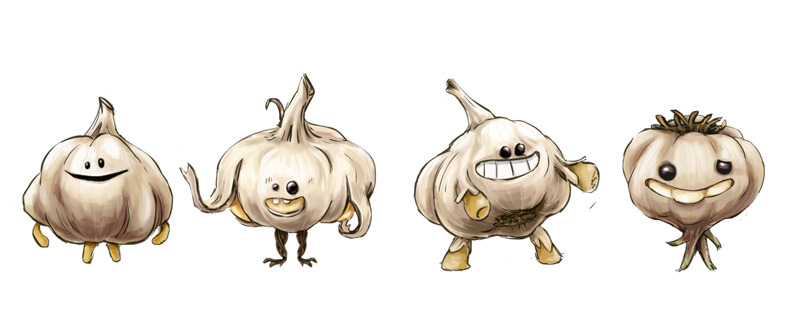Through the centuries, garlic has been both reviled and revered for its qualities. Today, the gossip about garlic and its apparent disease-preventing potential has reached a fevered pitch. For garlic lovers, that's good news; adding garlic to dishes can punch up the flavor.
When it comes to weight loss, garlic appears to be a miracle food. It contains the compound allicin which has anti-bacterial effects and helps reduce unhealthy fats and cholesterol.
Once you learn to appreciate its pungency, most anything tastes better with garlic. And once you learn its possible health benefits, you may learn to love it.

Health Benefits
The list of health benefits just seems to grow and grow. From preventing heart disease and cancer to fighting off infections, researchers are finding encouraging results with garlic. Behind all the grandiose claims are the compounds that give garlic its biting flavor. The chief health-promoting "ingredients" are allicin and diallyl sulfide, sulfur-containing compounds. Although allicin is destroyed in cooking, other helpful compounds are formed by heat or aren't destroyed by it. This lets cooked garlic give you a health boost. Garlic also contains the powerful antioxidants C and E, and the mineral selenium.
Garlic has been found to lower levels of LDL cholesterol, the "bad" cholesterol, and raise HDL cholesterol, the "good" cholesterol in the short term. Its effects last about three months when taken daily. It may also help to dissolve clots that can lead to heart attacks and strokes. Even when cooked, garlic helps keep cholesterol in your bloodstream from oxidizing and damaging the lining of your blood vessels, which helps prevent the formation of plaque.
Garlic has also been found to inhibit the growth of, or even kill, several kinds of bacteria, including Staphylococcus and Salmonella, as well as many fungi and yeast. Animal studies have found that garlic helps prevent colon, lung, and esophageal cancers. How much is enough? Researchers suggest you can enjoy the benefits of garlic every day by eating a typical clove weighing 3 grams.
Selection and Storage
Most varieties of garlic have the same characteristic pungent odor and bite. Pink-skinned garlic tastes a little sweeter and keeps longer than white garlic. Elephant garlic, a large-clove variety, is milder in flavor than regular garlic and should be used like a leek. But most varieties can be used interchangeably in recipes.
Choose loose garlic if you can find it. It's easier to check the quality of what you're getting than with those hiding behind cellophane. Its appearance can clue you in to its freshness; paper-white skins are your best bet. Then pick up the garlic; choose a head that is firm to the touch with no visible damp or brown spots.
Don't expect the flavor of garlic powder to mimic fresh garlic. Much of the flavor is processed out. Garlic powder, however, may retain some active components. Garlic salt, of course, contains large amounts of sodium -- as much as 900 milligrams per teaspoon, so avoid using it.
Store garlic in a cool, dark, dry spot. If you don't use it regularly, check it occasionally to be sure it's usable. Garlic may last only a few weeks or a few months. If one or two cloves have gone bad, remove them, but don't nick remaining cloves; any skin punctures will hasten the demise of what's left. If garlic begins to sprout, it's still okay to use, but it may have a milder flavor, just remove the tough, green sprout.
Preparation and Serving Tips
Garlic squeezed through a garlic press is ten times stronger in flavor than garlic minced with a knife, so use pressed garlic when you want full-force flavor to come through; use minced when you want to curtail it; and for a buttery flavor, bake whole cloves until tender. The longer the garlic is cooked, the more mild the flavor.
For just a delicate touch of garlic in salads, rub the bottom of the salad bowl with a cut clove before adding the salad greens. For more flavor, add freshly crushed garlic to the salad.
You can make your own version of fat-free garlic bread by warming a loaf of bread, rubbing the inside with a fresh cut clove of garlic, then toasting the loaf under the broiler. You'll get a teaser of garlic without all the fat.
Chew on fresh parsley, fresh mint, or citrus peel to neutralize the pungent aroma garlic leaves on your breath -- a common complaint among garlic lovers. This doesn't work for everyone, but it just might help you.
In order to reap the benefits of garlic's healing compounds, cut or crush garlic, then let it sit in the air for about 10 minutes before using. Crushed garlic needs time to interact with oxygen to form the beneficial substances.
Just about any form of garlic offers dieters many benefits. If you enjoy the taste of garlic, use it liberally in your food. Garlic is great for your health.
Source
http://health.howstuffworks.com/wellness/food-nutrition/natural-foods/natural-weight-loss-food-garlic-ga.htm




No comments:
Post a Comment